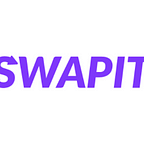Update: Decentralized staking, trading, and lending on the WandX App
After a brief interlude, we are delighted to share a couple of exciting new updates with you.
- First up, the Tezos wallet is now supported in-app. You can create a new Tezos wallet or import an existing Tezos wallet into the WandX Desktop app. And like always, you hold the keys (locally on your device), never us.
- The codebase for Decentralized Staking is up and ready. And with this, going forward, you will be able to use the WandX platform to stake not only Tezos but also Livpeer and Loom tokens.
On that note:
Staking using Tezos
Easily enough, you can perform the staking function using your Tezon wallet itself. You simply stake certain XTZ tokens to ‘delegates’ which run the Tezos blockchain. The rewards, too, will be deposited directly into your wallets after approximately 20 days. All this while, your staked tokens will be stored in another account (KT1…) inside your wallet, which you will have very limited access to.
Staking using Livepeer
You can ‘bond’/‘stake’ your Livepeer Tokens (LPT) to ‘transcoders’ (validators), which perform the task of transcoding (i.e. converting video streams from original bit rates to required bit rates). Here, rewards need to be claimed. Once claimed, the rewards will be added to your total staked tokens count. To receive the reward, along with the principal, you can ‘un-bond’ your tokens, and after a cooling (un-bonding) period of approximately 7 days, you will be able to withdraw both the principal as well as the reward into your wallets.
Staking using Loom
The process of staking requires a bridge called the ‘gateway contracts’, which acts as the doorway for the transfer of tokens from (an account in) Ethereum blockchain to (an account in) Plasma chain and vice versa. Once the LOOM tokens are in the Plasma account, they can be staked/delegated to validators. Rewards need to be claimed and will be received after 1 election cycle of approximately 2 weeks. As of now, only the functionality to deposit (rinkeby) Ether into the gateway contracts is available.
3. Also, the code base for decentralized trading — aggregate trading of ERC20 Tokens across Bancor, Kyber, Uniswap, 0x — is now up. Using the desktop app, you will be able to choose a token of your choice (say X) which you wish to trade for another token (say Y). The desktop app will provide the best rates (if available) of Y, for 1 unit of X, from Uniswap, Bancor, Kyber and 0x. Once the user selects the option to buy, the app (by default) chooses the highest rate of Y from among the available highest rates, and swaps the appropriate units of Y for the specified units of X, into the user’s wallet.
As of today, the best prices are usually found on Bancor and Kyber. Uniswap and 0x do not have sufficient liquidity. For other Tokens that aren’t available on these liquidity pools, the WandX DEX across ETH, NEO, WAN, AION can be used.
4. The end-to-end UX prototype for enabling lending/borrowing of tokens is now complete. A successful partnership with the Lendroid team has been set up for this and Lendroid integration into WandX app will be happening shortly. Once integrated, users would be able to lend their USDC/DAI/LST and borrow the same by keeping their WETH/DAI/DGX as collateral.
Details of our implementation can be found here:
Codebase for the trade aggregator: https://github.com/WandXDapp/Trading-Flow
Codebase for the staking solution: https://github.com/WandXDapp/Staking-Flow
Codebase for the lending solution: Will be partnering with Lendroid for implementation of ERC20 Token lending on the WandX Desktop app.
Note: These updates will be pushed to the desktop app as soon as we finish testing.
For more, please reach out to us on t.me/wandxapp
